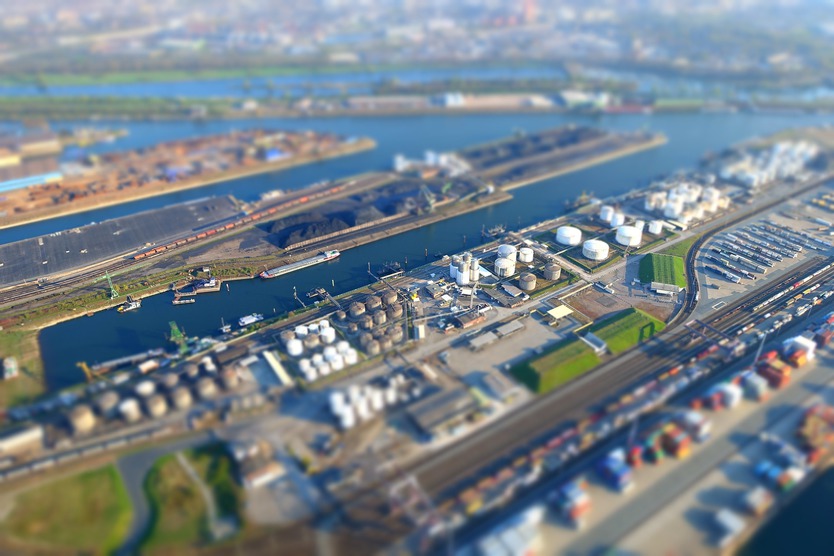
The world`s largest inland port in Duisburg
The port in the West German city of Duisburg is the largest inland port in the world and indispensable for European logistics. More than 4 million containers were handled in 2018, and the port’s energy consumption and emissions are correspondingly high. In addition, the port is located directly between several cities of the Ruhr area, which form a conurbation of 5 million people.
The port operator Duisburger Hafen AG is now working with the Fraunhofer Institute for Environmental, Safety and Energy Technology UMSICHT to develop an energy concept for a cross-sector approach to the intelligent networking of shipping, logistics and local industrial companies. Based on a location analysis, concepts for a sustainable energy supply are being developed and tested in specifically allocated areas of the port. The energy coupling of all sectors requires an extension of additional regional energy production capacities, so suitable places must also be identified in the port area. In an attempt to improve the energy consumption, a detailed analysis of the infrastructure, facilities and buildings will also be carried out. Improving the port’s logistics processes will lead to a further reduction in energy consumption as well. A positive side effect of increasing the efficiency of these processes will mean that in future even more goods can be transported using climate-friendly, maritime waterways.
Due to its geographical location ‒ in the heart of industry, commerce and residential areas ‒ changes in the port will potentially very quickly impact other areas. In order to develop a jointly sustainable concept, the Fraunhofer Institute and the port operator are involving a large number of players in a multi-stakeholder approach.
The Federal Ministry for Economic Affairs and Energy is providing €1.3 million in funding for research on the enerPort project from 2019-2022.


